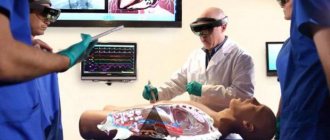Biological role of manganese
The functions of manganese in the human body are mainly due to the fact that the element is part of the structure of enzymes that catalyze certain biochemical reactions:
• Constitutes the active centers of liver enzymes, which are responsible for the neutralization and removal of certain toxic metabolic products from the body • Part of the enzymes responsible for tissue respiration • Is an integral part of substances that regulate the formation of connective tissue elements, maintains the elasticity of cartilage and bone density • Participates in the production of pancreatic hormones (synthesis of its hormones) • Increases the performance of the nervous system, improves signal transmission in the white matter • Provides muscle function • Takes part in the processes of production and consumption of energy in the body • Promotes full protein metabolism • Has a protective effect on the liver • Reduces glucose content in the blood, improving its absorption by tissues • Indirectly participates in blood coagulation processes • Increases the functional activity of the thyroid gland • If, simultaneously with adequate dosages of manganese, the body receives enough copper and zinc, then it exhibits better antioxidant properties. In this capacity, the element has a general health-improving and rejuvenating effect. • Has a beneficial effect on the absorption of B vitamins, and enhances their positive effects in the body.
References
- Aschner, M., Erikson, K. Manganese. Adv Nutr., 2021. - Vol. 8(3). — P. 520-521.
- Horning, K., Caito, S., Tipps, K. et al. Manganese Is Essential for Neuronal Health. Annu Rev Nutr., 2015. - Vol. 35. - P. 71-108.
- Michalke, B. Review about the manganese speciation project related to neurodegeneration: An analytical chemistry approach to increase the knowledge about manganese related parkinsonian symptoms. J Trace Elem Med Biol., 2021. - Vol. 37. - P. 50-61.
Signs of manganese deficiency
A deficiency of the mineral occurs quite rarely, and additional use of manganese is not necessary for many people. However, if a person experiences disorders of the pancreas, thyroid, or gonads, then he should think about restoring the normal content of manganese in the body.
Anemia, a tendency to fractures, and delayed growth and development in children may also be associated with a deficiency of the element. In adults, chronic deficiency of the mineral is associated with accelerated aging, increased morbidity, an increased risk of developing allergies and even, possibly, cancer.
Occupational hazards
M. is an industrial poison with pronounced toxic properties. In industrial conditions, M. is found in the form of dusts, vapors, and aerosols containing oxides or salts of M. Industrial poisoning of M. is described during the mining, processing, and use of manganese-containing ore, in steelmaking, ferroalloy production, during the production and use of manganese-containing electrodes, and during welding under fluxes, in the production of dry elements, in the production of potassium permanganate.
The maximum permissible concentration of M (in terms of MnO2) in the air of working premises in the USSR is set at 0.3 mg/m3.
Under industrial conditions, M enters the body mainly through the respiratory tract (see Manganoconiosis), partly through food, and can be absorbed through the skin.
M. is a poison of cumulative action and, in case of chronic poisoning, accumulates in parenchymal organs (liver, kidneys), in the endocrine glands, and in smaller quantities in the bones, brain and spinal cord. M. penetrates the blood-brain barrier and has a clear tropism for the subcortical structures of the brain. M. is excreted from the body mainly through yellowish-kish. tract, to a lesser extent by the kidneys, is found in saliva and breast milk.
The content of M. in human blood up to 100 μg% is accepted by occupational pathologists as the norm.
In case of chronic poisoning, the content of M in the blood and other biological media is tens of times higher than the normally acceptable amounts. It should be remembered that an increased content of M. in blood serum and urine is not always a mandatory sign of poisoning, since, accumulating in various organs, M. circulates in the blood and can be determined for a long time (for 1-2 years) in biological media and after the termination of production contact with him.
M. is classified as an aggressive neurotropic poison of chronic action. In industrial conditions, only chronic forms of M poisoning occur. The timing of development and severity of poisoning depend on the concentrations of manganese in the workplace. The individual sensitivity of the body is of certain importance. The higher the concentration of M. in the workplace, the shorter the development time and the more severe the poisoning clinic.
Cases of rapid (after 2-6 months) development of severe M. poisoning among miners of manganese mines in Morocco and Chile have been described. At these mines, the dry method of drilling rock was used; concentrations of metal under such conditions were hundreds and thousands of times higher than permissible levels.
In the USSR, thanks to the radical improvement of working conditions (sealing, dust removal, wet drilling), in recent years, pronounced forms of industrial poisoning of M. are extremely rare. Mostly initial, less often moderate forms of poisoning are observed. Such forms can develop under conditions of long-term work (over a number of years) in contact with increased concentrations of M.
The pathogenesis of M. poisoning is complex; among many mechanisms, leading importance is given to disturbances in the metabolism of biogenic amines, a number of enzymes, and disruption of hormone formation.
There are indications of inhibition of adrenoreactive and increased activity of M- and N-cholinoreactive systems, accumulation of acetylcholine in the synapses of the subcortical nodes, in the hypothalamus. A reliable connection has been proven between extrapyramidal and mental disorders with a violation of the synthesis and, in particular, the deposition of dopamine.
Hypofunction of the endocrine glands (genital, thyroid, adrenal glands, pituitary gland) is of particular importance in the pathogenesis of M. poisoning. There is evidence of the possible significance of functional liver failure in the pathogenesis of M. poisoning.
In severe cases of M. poisoning, significant changes are detected in the structure of the EEG and EMG. However, EEG changes do not always reflect the severity of poisoning. EMG already in the early stages of poisoning indicates significant disturbances in the bioelectrical activity of the muscles of the limbs, especially the muscles of the legs. Characteristic features include suppression of bioelectrical activity, changes in the EMG structure, and distortion of reciprocal relationships. EMG allows early detection of signs of dysfunction of the extrapyramidal system. In the stage of manganese parkinsonism, insufficiency of the vasomotor mechanisms of the brain, a decrease in the intensity of pulse blood supply in the vertebrobasilar system, and a decrease in total cerebral blood flow are revealed.
The pathomorphology of M. poisoning is based on experimental materials; isolated sectional cases are described. In all cases, the most severely affected are the deep parts of the brain: the striopallidal system, the hippocampus, and the limbicoreticular complex. Morphologically, diffuse degenerative-dystrophic changes in the nervous system are noted, with the most severe damage to the striopallidal region and the visual thalamus. The larger hemispheres of the brain and the spinal cord are affected to a lesser extent. Vascular reactions in brain tissue are not clearly expressed. Pathomorphological signs of damage during M. poisoning are close to encephalopathies described in case of poisoning with industrial poisons of neurotoxic action. Slight degenerative changes can be observed in the liver, kidneys, and endocrine glands.
There are three stages of chronic M poisoning. The first stage is characterized by functional disorders of the nervous system: asthenia, drowsiness, paresthesia and a mild decrease in strength in the limbs; symptoms of dysfunction of the autonomic nervous system: increased sweating, salivation; vegetative-sensitive polyneuritis. Neurological micro-symptoms may be detected: mild hypomimia, muscle hypotonia, increased tendon reflexes, hypoesthesia of the polyneuritic type.
A peculiar change in mental activity is considered characteristic: a decrease in activity, a narrowing of the range of interests, a decrease in memory and criticism of the disease, a weakening of associative processes, an increase in mental asthenia. Mental changes usually precede neurological symptoms of poisoning. There may be signs of suppression of the function of the gonads, thyroid gland, dysfunction of the liver and gastrointestinal tract. tract.
If you continue to work with M. in increased concentrations, the signs of poisoning increase.
The second stage is characterized by an increase in the symptoms of toxic encephalopathy, a pronounced asthenic syndrome is formed, apathy and drowsiness increase, a mnestic-intellectual defect of the psyche is revealed, and an adequate response to the disease is often absent. Neurological signs of extrapyramidal insufficiency are revealed: hypomimia, mild bradykinesia, pro- and retropulsion, muscle dystonia with increased tone of individual muscles. Signs of polyneuritis increase, paresthesia in the extremities increases, and walking up stairs becomes difficult. Characterized by suppression of the function of the gonads and adrenal glands. Functional disorders of the liver, bile ducts may be observed. tract.
The third stage of M. poisoning is described in the form of the so-called. manganese parkinsonism. Severe disorders in the motor sphere are characteristic: mask-like appearance of the face, dysarthria or monotonous speech, impaired writing, gait - “cock-like” (walking on toes due to contracture of the flexors of the feet) or spastic-paretic, with athetosis or paresis of the feet, rough pro- and retropulsion. All movements are slow and difficult. There is an increase in muscle tone, more often in the legs, and muscle hypotonia or dystonia is often observed. Tendon reflexes are increased in a pyramidal pattern; Pathological signs are rarely detected; a polyneuritic type of hypoesthesia is noted.
A distinctive feature of manganese parkinsonism are peculiar mental disorders: patients are euphoric, complacent, less often apathetic, criticism of the disease is reduced or absent, violent emotions (crying or laughter) periodically occur. The combination of euphoria, laughter and unsteady gait creates the impression of intoxication or foolishness. The mnestic-intellectual defect is significantly pronounced. Apathetic-abulic and depressive syndromes have been described. Characteristic is inhibition of gonadal function, and to a lesser extent hypofunction of other endocrine glands. At this stage, the EEG shows a gross restructuring of bioelectrical activity, the predominance of slow waves of activity. EMG reveals gross violations at all levels of the motor analyzer.
The diagnosis of M. poisoning is made taking into account specific working conditions (contact with increased concentrations of M.) and characteristic signs of poisoning: a peculiar mental disorder, movement disorders of an extrapyramidal nature. For the quantitative determination of M. in blood serum, the atomic absorption method is recommended. It is necessary to differentiate with various forms of encephalopathy (see) and parkinsonism (see).
Treatment at the early stage of M. poisoning should be aimed at detoxification processes: injections of vitamins B1, B6, ascorbic acid, intravenous infusions of novocaine, orally aminalon. General strengthening and spa treatment is indicated. Within 1 year, it is recommended to carry out 2-3 courses of antidote therapy in the form of injections of calcium-disodium salt EDTA (according to the generally accepted scheme). In stages II - III, as well as in the long-term period of poisoning, repeated courses of replacement therapy are indicated - levodopa, midantan (individual dosages), repeated courses of central anticholinergics, drugs that improve cerebral metabolism and blood supply (aminalon, stugeron, nootropil, anabolic hormones). Spa treatment for severe poisoning is not effective.
The prognosis for M. poisoning is favorable for life. In the first stage of M. poisoning, stopping work with it, in most cases, leads to partial or complete restoration of health, the process does not progress. The second stage of poisoning, even after stopping work with M. and treatment, can progress; restoration of health is incomplete. The course of the process during the development of the third stage of poisoning is unfavorable. Even after cessation of contact with M. and treatment, the process can progress over 1-3 years; in subsequent years, recovery of health is not observed. Severe mental and motor disorders remain for life.
Prevention of M. poisoning consists of carrying out sanitary and hygienic measures aimed at preventing M. contamination of working premises (automation, sealing of manganese ore processing processes, replacing the dry grinding method with a wet one, etc.; equipment for local exhaust ventilation, wet cleaning of the premises). Personal protection measures include the use of anti-dust respirators “Lepestok”, “Astra-2”, etc. (see Respirators); if the air is very dusty, use industrial gas masks with a BKF box and a filter; in the presence of confined spaces - hose gas masks with forced air supply (see Gas masks). In addition, strict adherence to personal hygiene measures, mandatory washing of the body after work, and frequent washing of work clothes are necessary.
Workers engaged in the extraction and processing of metal and its compounds have the right to a reduced working hours of up to 6 hours. working day, increase in vacation duration by 12 days, free medical treatment, food (ration No. 5) or milk.
Preliminary and periodic medical examinations of persons working with M. and its compounds are mandatory. There is a list of mandatory medical contraindications for persons entering work in contact with M. These include organic diseases of c. n. p., mental illnesses and psychopathy, neuroses, severe disorders of the autonomic nervous system, polyneuritis, endocrine diseases, hron, liver diseases, kidney diseases, hron, nonspecific lung diseases.
Examination of the working capacity of patients with manganese poisoning. When a diagnosis of M. poisoning is made at any stage, further work with M. is prohibited.
In case of decreased ability to work or qualifications, patients are sent to VTEK to determine disability.
Signs of excess manganese
Currently, excess manganese levels in the body are rare. Previously, it was observed more often and was detected in ore mining workers, as well as in employees of enterprises whose activities involved the use of manganese-containing compounds. In the absence of proper protection (safety precautions were not always given enough attention), people developed severe health problems. For example, manganese rickets was encountered - fragility and softening of bones due to a violation of their structure.
Excess manganese in the body can also lead to symptoms reminiscent of poisoning with heavy metal salts. Workers of a number of enterprises, as well as welders (welding aerosol contains a lot of manganese) should be very careful!
To avoid an excess of the mineral, you should not use manganese in doses higher than 11 mg per day. The toxic dose is 40 mg per day.
Patient preparation rules
hair
Standard preparation conditions (unless otherwise determined by the doctor):
14 days in advance Stop taking any hair care products, topical medications.
Notes:
Hair must be clean and thoroughly dried.
It is not allowed to apply care and styling products to hair before analysis. Perm without dyeing or bleaching hair does not interfere with the analysis. It is recommended to analyze dyed hair 2 months after the dyeing procedure. Hair is cut from the back of the head at a distance of 0.1 mm from the roots. BM is delivered in a sterile plastic container with a screw cap or in a paper envelope. Volume - 0.2 g (which for long hair is a bundle 5 cm long and 2-3 mm thick, for short hair the volume is approximately equal to the volume of a teaspoon). venous blood Standard preparation conditions (unless otherwise determined by the doctor):
8 hours before, withstand fasting, exclude fatty foods.
You can drink water. daily urine Notes:
Perform the first morning urination in the toilet. Collect all further daily urine, including the morning portion of the next day, into a container (important - the volume of the container must be sufficient for the expected amount of urine per day). During the entire collection period, keep biological material in a cool place, protected from light. After the collection is completed, determine the daily volume of collected urine, mix, pour 30-40 ml into a standard urine container and deliver to the ML DILA department within 2 hours after collecting the last portion.
You can add this study to your cart on this page
Gynecological problems and infertility
Manganese supports the production of estrogen and other sex hormones. If there is a lack of it, the hormonal balance is disrupted, which threatens infertility, sudden termination of pregnancy, and an increased risk of gynecological inflammation. An early onset of menopause is noted.
A lack of manganese during pregnancy is especially dangerous: it is fraught with various pathologies of the fetus, including underdevelopment of the neural tube. You cannot self-medicate; the required dose of medications containing magnesium must be determined by a gynecologist.
Dizziness
Manganese deficiency interferes with the absorption of other important elements. With an insufficient amount of iron, a person suffers from dizziness, accompanied by nausea, vomiting, and temporary loss of orientation in space. The condition is worsened by lack of sleep and uncontrolled use of painkillers.
A balanced menu that includes foods rich in manganese will help restore the balance of macroelements:
- various nuts,
- legumes,
- potato,
- Rye bread,
- bran.
You should not give up tea and coffee, and the amount of alcohol should be sharply limited.
Deterioration of skin, hair and nails
When using certain medications and an unbalanced diet, the daily dose of manganese entering the body drops to a critical minimum.
With prolonged deficiency, changes in the skin are noticeable. Hyperpigmentation occurs, especially noticeable in open areas, increased dryness of the skin, dermatitis, and small scaly rash.
Nails peel and break, naturally dark hair takes on a reddish tint.











